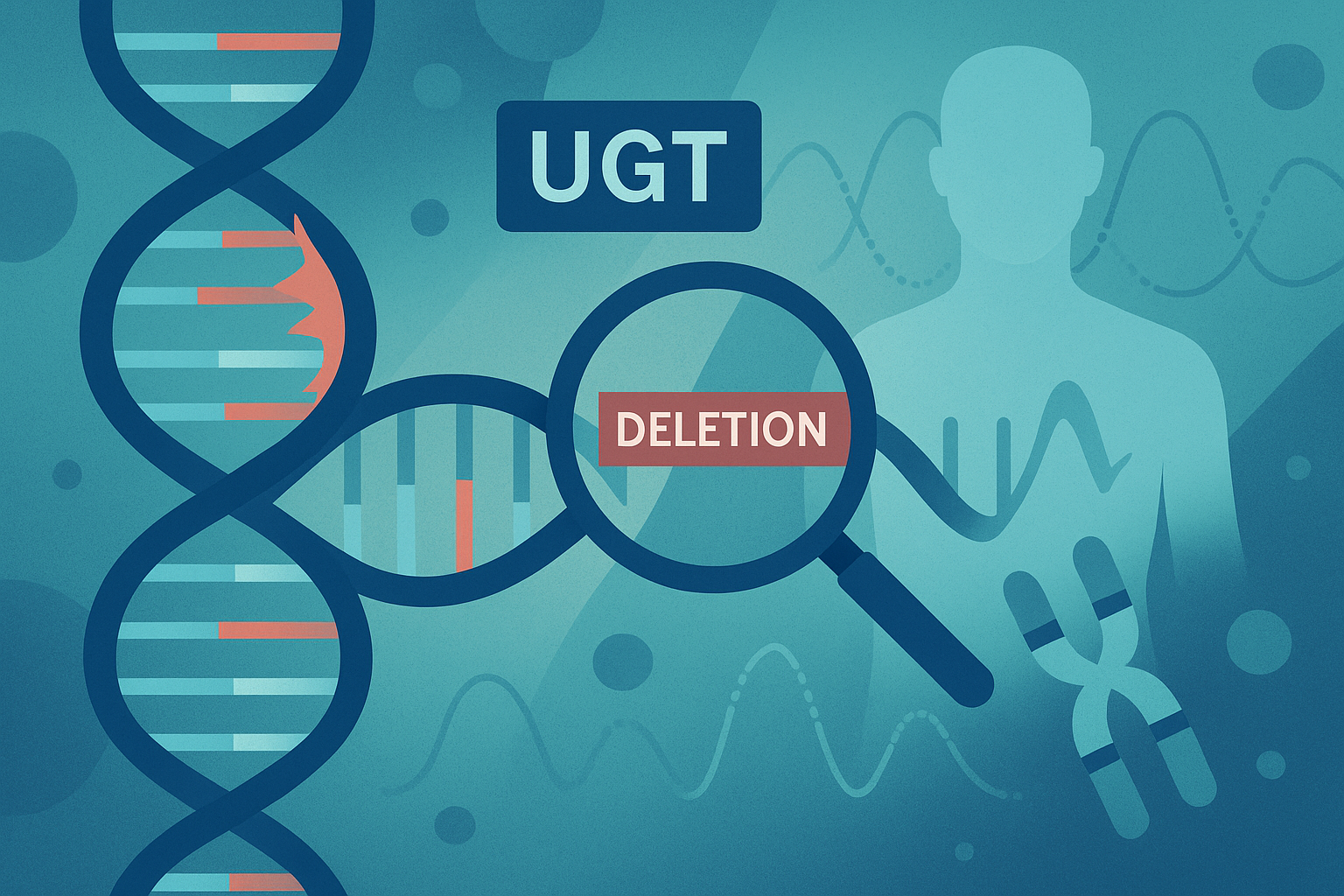Dr. Liz Bartman

Did you know sometimes your total testosterone is not accurate on DUTCH? That’s because of a UGT mutation, such as a UGT2B17 deletion, which can impact urinary clearance of testosterone.
The UGT2B17 gene encodes a member of the UDP-glucuronosyltransferase family, which is involved in the glucuronidation of androgens, including testosterone. Glucuronidation is a metabolic process that facilitates the elimination of lipophilic compounds, including hormones, by increasing their solubility for urinary excretion. The UGT2B17 deletion polymorphism is a common structural variant in human populations, characterized by the complete absence of the gene in homozygous deletion carriers, and significantly reduced activity in heterozygous carriers. Recall, as a copy number variant, individuals have one gene from each parent and may lack one or both of those genes.
Genetic Basis and Prevalence Across Populations
The percentage of the global population with a UGT2B17 deletion varies significantly across ethnic groups, making it challenging to assign a single global percentage. However, estimates can be derived based on the distribution of the deletion among major population groups:
East Asian populations: The UGT2B17 deletion is most common, with approximately 66-75% carrying at least one deletion. (Jakobsson et al., 2006).
European populations: The deletion is less frequent, with 9-20% of individuals being homozygous for the deletion.
African populations: The deletion is rare, with less than 5% being affected.
Middle Eastern and South Asian populations: The prevalence is intermediate, though exact numbers vary. Estimates suggest 20-30% may carry at least one deletion allele.
Using a rough global estimate based on population proportions: Approximately 40-50% of the world’s population may carry at least one UGT2B17 deletion, which would alter testosterone clearance into urine and lead to falsely low values of testosterone in urinary testing.
This distribution reflects the high genetic diversity across populations and highlights the influence of evolutionary and environmental factors on the prevalence of this deletion globally.
Role of UGT 2B17 In Urinary Clearance of Testosterone
The UGT2B17 deletion has a profound impact on testosterone metabolism, as the enzyme encoded by this gene is the primary contributor to testosterone glucuronidation. Individuals with the deletion exhibit reduced urinary excretion of testosterone glucuronide, which is the form of testosterone measured in urine.
Reduced clearance can lead to altered serum testosterone levels and may influence androgen-responsive physiological processes. For instance, this deletion may modulate responses to testosterone activity and BMI in male patients (Zhu et al., 2015).
In sports, the UGT2B17 deletion has significant implications for anti-doping efforts. Testosterone doping is often monitored using the urinary testosterone to epitestosterone (T/E) ratio. Carriers of the UGT2B17 deletion exhibit lower baseline urinary testosterone levels and T/E ratios, potentially leading to false negatives in doping tests. Adjustments in testing thresholds have been proposed to account for this genetic variation (Rane et al., 2012).
References
- Jakobsson, J., Ekström, L., Inotsume, N., et al. (2006). Large differences in testosterone excretion in Korean and Swedish men are strongly associated with a UDP-glucuronosyl transferase 2B17 polymorphism. Journal of Clinical Endocrinology & Metabolism, 91(2), 687-693. https://doi.org/10.1210/jc.2005-1643
- Rane A, Ekström L. Androgens and doping tests: genetic variation and pit-falls. Br J Clin Pharmacol. 2012 Jul;74(1):3-15. doi: 10.1111/j.1365-2125.2012.04294.x.
- Zhu AZ, Cox LS, Ahluwalia JS, Renner CC, Hatsukami DK, Benowitz NL, Tyndale RF. Genetic and phenotypic variation in UGT2B17, a testosterone-metabolizing enzyme, is associated with BMI in males. Pharmacogenet Genomics. 2015 May;25(5):263-9. doi: 10.1097/FPC.0000000000000135.


